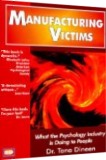|
We have created an invented world of psychobabble, from paranoia to penis envy, and from ID to identity crisis to inferiority complex. With a rise of over 200 contradictory therapies by 1990 we have been seduced by Spock to Skinner, to hypnotherapy to access a person’s questionable if not fabricated unremembered childhood abuse, or for some it is the healing of their "wounded inner child”.
In addition, we have created a plethora of over 3,000 assessment instruments from achievement, to intelligence, occupational, and personality.
Regrettably, there are many psychological assessments in extensive use that are accepted as being scientific. The Myers-Briggs and the Enneagram are good examples which are often used in educational and corporate and business settings in pseudoscience and psychobabble and have been purported to be as about as much value as newspaper astrology.
So why, with all these approaches are there more behavioral problems, more reported accounts of depression and psychotherapeutic drugs taken in copious quantities?
Psychology has failed big-time and even Dr. Tina Dineen, who slams the psychological community with well argued criticism is weak on proposing positive solutions.
What is interesting especially in examining organizational culture is to keep in mind that people create the environment and the environment creates people. Add to that, the traditional assessments and the very nature of how they are constructed are created as "events" rather than a part of a process. These two major problems with assessments are then magnified by the lack of “what to do” about the identified problems.
They do not measure the environment nor offer a comprehensive process of providing solutions to what they measure.
|



